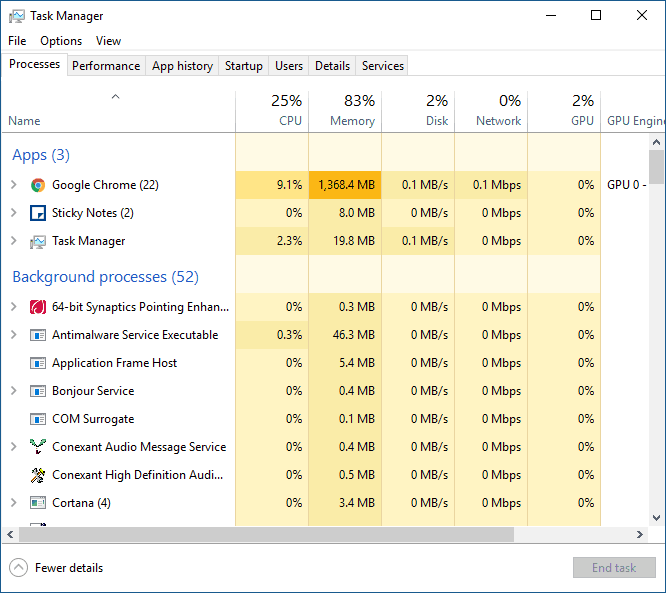

- WIN 7 TASK MANAGER SHORTCUT HOW TO
- WIN 7 TASK MANAGER SHORTCUT FOR WINDOWS 10
- WIN 7 TASK MANAGER SHORTCUT WINDOWS 10
- WIN 7 TASK MANAGER SHORTCUT PC
- WIN 7 TASK MANAGER SHORTCUT WINDOWS 8

These are the 10 ways to help you open Control Panel in Windows 10.
WIN 7 TASK MANAGER SHORTCUT WINDOWS 10
Open Control Panel Windows 10 with Task Manager
WIN 7 TASK MANAGER SHORTCUT FOR WINDOWS 10
If you don’t find a shortcut icon of Control Panel, you can create a shortcut for Windows 10 Control Panel for easier use. You can double-click Control Panel shortcut icon to open it. Some Windows 10 system has a default Control Panel shortcut on the desktop screen. I am pretty much never going to use whatever you call the screen that CTRL+ALT+DEL currently brings up, thus would like to switch task manager back to that shortcut. Open Control Panel Windows 10 with Shortcut Is there a relatively easy way to swap CTRL+SHIFT+ESC with CTRL+ALT+DEL. Type control panel and hit Enter to open it. Right-click Start and click Windows PowerShell to open it. Open Control Panel Windows 10 with PowerShell Related: Best 2 Ways to Boot to Command Prompt in Windows 10 Way 8. Then type control panel in Command Prompt window and hit Enter key to open Control Panel with command prompt (cmd). Type cmd and click OK to open Command Prompt in Windows 10. You can press Windows + R keys on the keyboard to open Windows Run. Open Control Panel Windows 10 with Command Prompt It is used to start or stop services.Read More Way 7. This tab mainly shows windows services that are installed currently. It is useful for advanced troubleshooting. This tab shows each detail of individual process that is running now. If the computer is being used by a single user, it is not useful but it can effectively track down processes running under users. In a multi-user environment, this tab is helpful to show each user’s current activity on programs.
WIN 7 TASK MANAGER SHORTCUT WINDOWS 8
It is also only available in Windows 8 and Windows 10. Disabling some programs that do not need to be started at windows startup can actually speed up a computer. Also, it gives information about the startup impact. Startup tab lists down every program that starts up automatically whenever the computer is turned on. This tab is only available in Windows 8 and Windows 10. It is great to track any program that might be a network resource or CPU hog. This tab gives information about CPU usage and network utilization that each windows app has used. It is a great also a great option to find information about hardware components like CPU model, maximum speed, disk transfer rate, IP address etc. Here overall performances of that hardware can be checked. Performance tab is the summary of what is going on with hardware components like CPU, RAM, Hard-Drive, Network and more. From this tab, programs or processes can be closed by selecting the specific program or process and clicking on ‘End Task’. The Process tab contains the list of all active programs and processes and as well as background and windows processes that are running currently on PC. Older versions have tabs with different names but with the same working methods. There are mainly 7 tabs in this program in modern Windows operating systems.
WIN 7 TASK MANAGER SHORTCUT PC
Als, the user can use the Windows Task Manager to End the process of some tasks forcefully that making problem on PC in order to get a better performance by the machine. Task manager is mainly used to observe all the programs, processes, services and overall performance of a computer and to terminate those programs, processes or services making trouble for the computer.
WIN 7 TASK MANAGER SHORTCUT HOW TO
What is task manager used for? How to open task manager on Windows 10/8/7/XP?


 0 kommentar(er)
0 kommentar(er)
